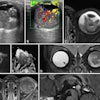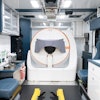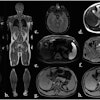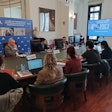
STOCKHOLM (Reuters Health), Sep 18 - Among patients receiving postoperative chemoradiation for locally advanced gastric cancer (LAGC), Ashkenazi Jews experience more treatment toxicity than Sephardic Jews, according to a report here at the 33rd Congress of the European Society for Medical Oncology (ESMO).
Dr. Ronen Brenner, a medical oncologist at Beilinson Medical Center in Petach Tiqva, Israel, and colleagues compared treatment-related toxicity in 84 Ashkenazi and 60 Sephardic Jews who had chemotherapy with 5-fluorouracil/leucovorin and radiation after resection of LAGC.
Distinct diseases have been described for Ashkenazi Jews (descendants of Jews from Eastern Europe) and Sephardic Jews (descendants of Jews from Asian countries and North Africa), which are the two main ethnic subgroups of the Israeli Jewish population, Dr. Brenner pointed out.
Notably, Ashkenazi Jews carry an increased risk of inherent diseases like cystic fibrosis, Gaucher's disease, Crohn's disease, familial disautonomia, and BRCA- related breast cancer. Diseases like Familial Mediterranean Fever and G-6PD are much more prevalent in Sephardic Jews. These differences, he added, may be ascribed, at least in part, to genetic as well as lifestyle differences.
He also noted that differences in the toxicity and tolerability of different chemotherapy regimens have been demonstrated between African Americans and Caucasians given 5-fluorouracil as adjuvant treatment for colon cancer, Chinese and Western patients given adjuvant doxorubicin and cyclophosphamide for early breast cancer, and Japanese and American patients given tegafur uracil for advanced colorectal cancer as well as between other ethnic groups in various countries.
However, data on potential differences in the toxicity profiles of chemotherapy and radiation between Israeli Ashkenazi and Sephardic Jews are absent, he added.
Results showed that Ashkenazim had significantly more nonhematological toxicity than Sephardics, with significantly higher rates of fatigue of all grades (58% versus 32%, p = 0.001) and anorexia (49% versus 30%, p = 0.02) and a trend toward more diarrhea of any grade (39% versus 25% p = 0.052).
The two groups had similar rates of other hematological, gastrointestinal, and dermal toxicities.
The groups did not differ in the frequency of dose reductions, irradiation delays, and completion of each treatment modality.
Dr. Brenner said he's not sure why the two groups differ in the rates of nonhematological toxicity. "It may be simply that Ashkenazi Jews are more willing to share their treatment-related complaints with their physicians," he suggested, or there may be organic differences between the two groups.
At any rate, the finding may be helpful to clinicians who may decide they want to consider the use of drug or psychological treatments to help these patients avoid these toxicities.
He added that future research in larger number of patients may yield some answers.
By Jill Stein
Last Updated: 2008-09-17 14:02:22 -0400 (Reuters Health)
Related Reading
BRCA mutations tied to improved survival in Ashkenazi ovarian cancer patients, January 2, 2008
Female hormones appear to influence risk for gastric cancer, December 20, 2007
Male breast cancer more common, outcome better among Ashkenazi Jews, April 18, 2002
Copyright © 2008 Reuters Limited. All rights reserved. Republication or redistribution of Reuters content, including by framing or similar means, is expressly prohibited without the prior written consent of Reuters. Reuters shall not be liable for any errors or delays in the content, or for any actions taken in reliance thereon. Reuters and the Reuters sphere logo are registered trademarks and trademarks of the Reuters group of companies around the world.

















